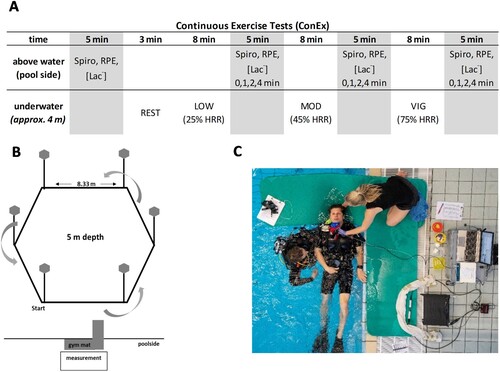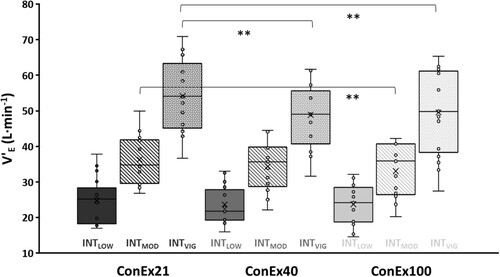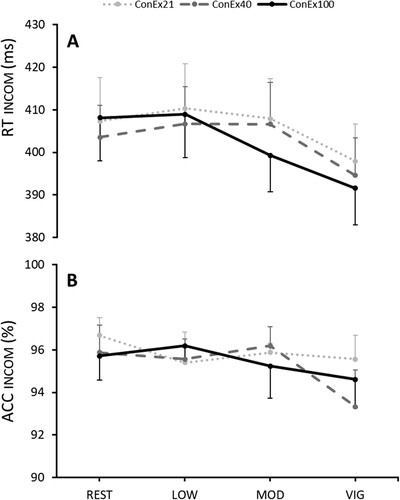Figures & data
Figure 1. (A) Test procedure of the underwater performance test and the three continuous exercise tests (ConEx). Exercise intensity was controlled by individual percentages of heart rate reserve (HRR%) for low (low, 25% HHR), moderate (mod, 45% HRR), and vigorous exercise (vig, 75% HRR). (B) The underwater parcours setup for all underwater tests. (C) Measurement setup on the poolside for ConEx.

Figure 2. Ventilation (V̇E) (L·min−1) is depicted as individual data (dots), mean values (x), medians (horizontal line), and standard errors (bars) for the continuous exercise tests (Conex21, ConEx40, ConEx100) and exercise intensities (low, mod, vig) over the last 7 min of underwater exercise. Significant post hoc effects are indicated with *.

Table 1. Mean values and standard deviation are depicted for minute ventilation (V̇E) (L·min−1), heart rate (HR) (min−1), velocity (v) (m·s−1), rating of perceived exertion (RPE), blood lactate [Lac-] (mmol·L−1), and post-exercise carbon dioxide output (V̇CO2) (L·min−1) for each exercise intensity (low, mod, vig). Main effects for GAS, INTENSITY, and GAS*INTENSITY are listed below. Significant post hoc differences to 29 kPa are indicated with* and for RTincom with #.

